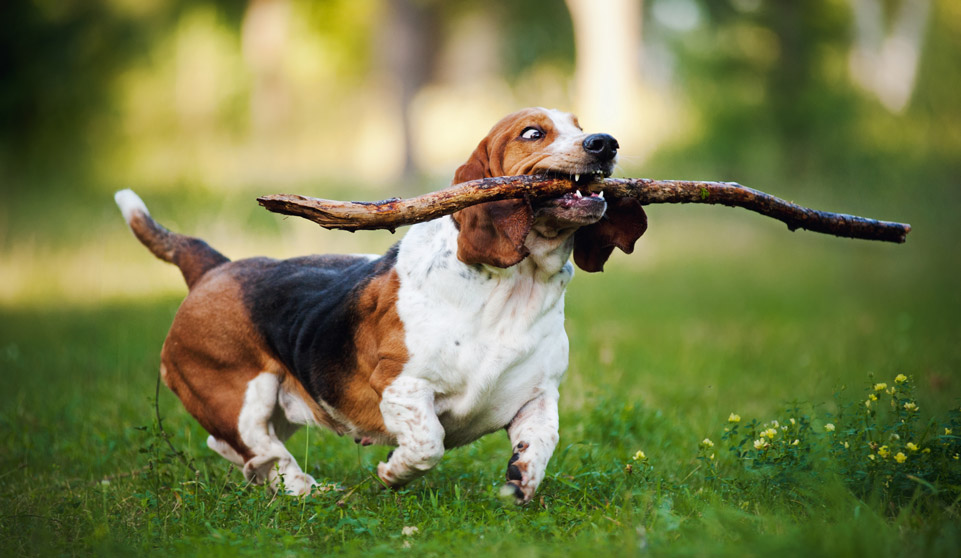Basset Hound Information

History
Basset Hounds originated in 16thFrance, they were used for hunting foxes and hares which was very popular at the time.
The friars of St. Hubert’s Abbey developed the brred by crossbreeding a Blood Hound and Basset Artesien Normand as they desired a short-legged dog, capable of following a scent under low brush.
Their name Basset Hound derived from “bas,” a word which means low or near ground in French.
They were recognised by the British and American Kennel Clubs in the late 19thcentury.
Characteristics
- Vocal
- Gentle
- Friendly
Basset Hound Temperament & Size
Basset Hounds have a calm disposition, are extremely friendly and great with children, which make them excellent companions and family pets. However their activity level is low in comparison to some other breeds.
They are large, short legged dogs with a short and smooth coat adorned with various colours.
They are renowned for their exceptional sense of smell which is second only to that of the Bloodhound.
Certain traits such as their large ears and excessive skin are prone to infections and require special attention.
- Clean and dry ears regularly.
- Clean and dry any skin folds regularly.
- Correct diet and daily exercise to avoid weight gain.
- Ensure regular veterinary check-ups.
Basset Hound Life Span & Health Problems
Average lifespan is 10 – 14 years.
Common illnesses include;
- Bloat (Gastric Dilatation Volvulus, GDV) – Twisting of the stomach resulting in rapid swelling of the abdomen causing pain and eventual death if not treated.
- Hip and Elbow Dysplasia – Genetic conditions that cause abnormal development of the elbow and hip joints in young dogs. This can lead to early onset degenerative joint disease.
- Skin Fold Dermatitis – Many breed standards require that the dog have excessive and wrinkled skin. This excess skin leads to folding and subsequent irritation, inflammation and infection.
- Von Willebrand’s disease and Canine Thrombocytopenia – Inherited clotting disorders.
- Cherry Eye – Prolapsed gland of the third eyelid causing irritation to the eye and requires surgery.
- Ear Infections – Their long ears don’t allow adequate airflow to the inner ear and predisposes them to infection.
- Panosteitis – Excessive bone production in long bones of young dogs resulting in shifting lameness.
- Obesity – Prone to weight gain and obesity related illnesses.
- Patella Luxation – Partial to full dislocation of one or both kneecaps.
